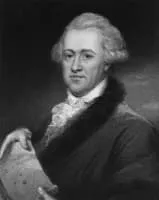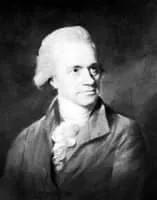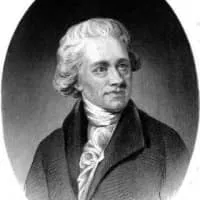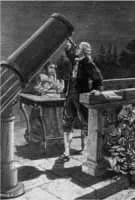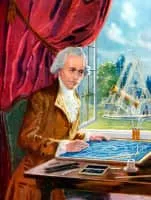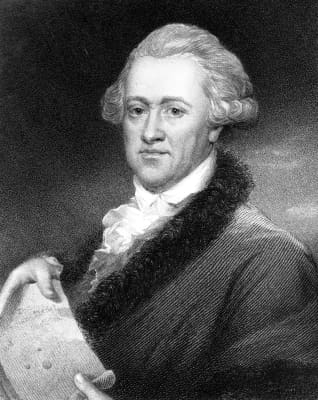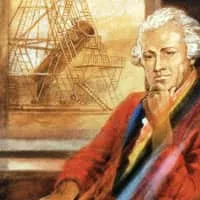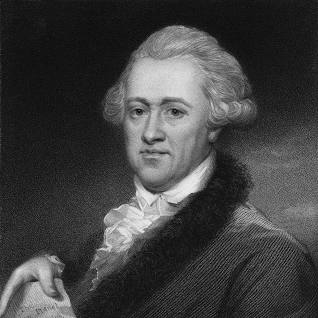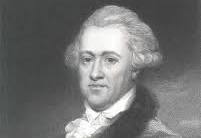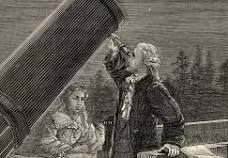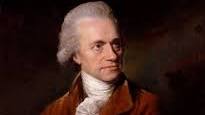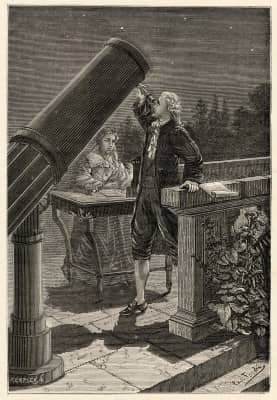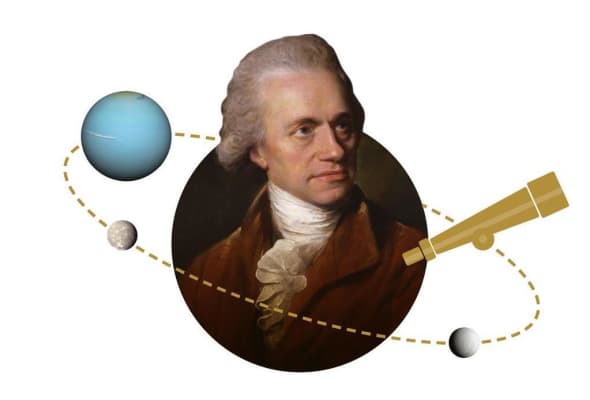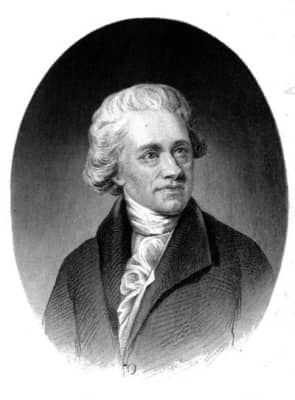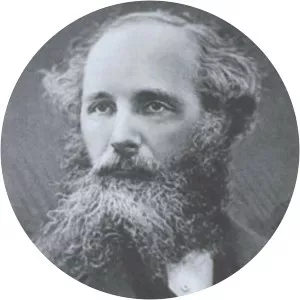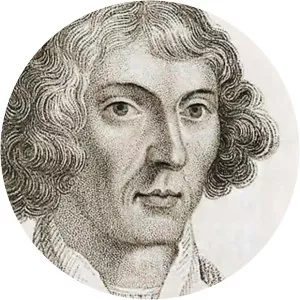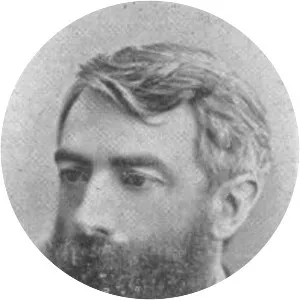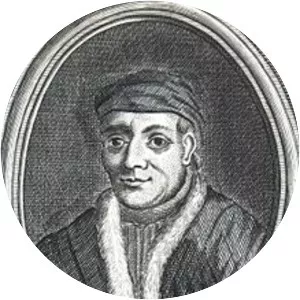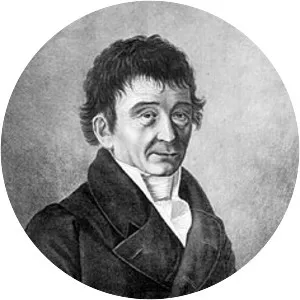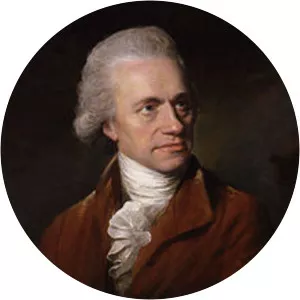
William Herschel
| Use attributes for filter ! | |
| Gender | Male |
|---|---|
| Death | 201 years ago |
| Date of birth | November 15,1738 |
| Zodiac sign | Scorpio |
| Born | Hanover |
| Germany | |
| Date of died | August 25,1822 |
| Died | Slough |
| United Kingdom | |
| Full name | Frederick William Herschel |
| Discovered | Uranus |
| Enceladus | |
| NGC 6251 | |
| Mimas | |
| Oberon | |
| Titania | |
| NGC 4473 | |
| NGC 4074 | |
| IC 1101 | |
| Markarian 590 | |
| Siblings | Johann Heinrich Herschel |
| Caroline Herschel | |
| Job | Astronomer |
| Oboist | |
| Spouse | Mary Baldwin Herschel |
| Parents | Isaac Herschel |
| Anna Ilse Moritzen | |
| Children | Sir John Frederick William Herschel |
| Date of Reg. | |
| Date of Upd. | |
| ID | 440064 |
Catalogue of Nebulae and Clusters of Stars
Catalogue of One Thousand New Nebulae and Clusters of Stars
The Scientific Papers of Sir William Herschel: Volume 2: Including Early Papers Hitherto Unpublished
On the Satellites of the Planet Saturn, and the Rotation of Its Ring on an Axis: By William Herschel, LL. D. F. R. S. From the Philosophical Transactions
The Scientific Papers of Sir William Herschel V1 (1912)
Catalogue of a Second Thousand of New Nebulæ and Clusters of Stars: With a Few Introductory Remarks on the Construction of the Heavens. By William Herschel . . . From the Philosophical Transactions
The Scientific Papers of Sir William Herschel: Volume 1: Including Early Papers Hitherto Unpublished
Description of a Forty-feet Reflecting Telescope
On the Construction of the Heavens: By William Herschel, Esq. F. R. S. Read at the Royal Society, February 3, 1785
Account of the Discovery of a Sixth and Seventh Satellite of the Planet Saturn: With Remarks on the Construction of Its Ring, Its Atmosphere, Its Rotation on an Axis, and Its Spheroidical Figure. By William Herschel . . . From the Philosophical Transactions. Read at the Royal Society, November 12, 1789
On the Discovery of Four Additional Satellites of the Georgium Sidus: . . . By William Herschel . . . From the Philosophical Transactions
On the Nature and Construction of the Sun and Fixed Stars: By William Herschel, LL. D. F. R. S. From the Philosophical Transactions
Investigation of the Powers of the Prismatic Colours to Heat and Illuminate Objects, Experiments on the Refrangibility of the Invisible Rays of the Sun Experiments on the Solar, and on the Terrestrial Rays That Occasion Heat
On the Periodical Star [alpha] Herculis: With Remarks Tending to Establish the Rotatory Motion of the Stars on Their Axes. To which is Added a Second Catalogue of the Comparative Brightness of the Stars. By William Herschel, LL. D. F. R. S. From the Philosophical Transactions
Observations of the Changeable Brightness of the Satellites of Jupiter, and of the Variation in Their Apparent Magnitudes;: With a Determination of the Time of Their Rotatory Motions on Their Axes. To which is Added, a Measure of the Diameter of the Second Satellite, and an Estimate of the Comparative Size of All the Four
On the Power of Penetrating Into Space by Telescopes: With a Comparative Determination of the Extent of that Power in Natural Vision, and in Telescopes of Various Sizes and Constructions : Illustrated by Select Observations
Experiments on the Solar, and on the Terrestrial Rays That Occasion Heat; With a Comparative View of the Laws to Which Light and Heat, . . . Are Subject, . . . by William Herschel, . . . Part II. from the Philosophical Transactions
A Third Catalogue of the Comparative Brightness of the Stars: With an Introductory Account of an Index to Mr. Flamsteed's Observations of the Fixed Stars, Contained in the Second Volume of the Historia Coelestis : to which is Added, Several Useful Results Derived from that Index
Scientific Papers, Including Early Papers Hitherto Unpublished. Collected and Edited Under the Direction of a Joint Committee of the Royal Society and the Royal Astronomical Society, with a Biographical Introd. Compiled Mainly from Unpublished Material. . . ;
Account of Some Observations Tending to Investigate the Construction of the Heavens: By William Herschel, Esq. F. R. S. Read at the Royal Society, June 17, 1784
On Nebulous Stars, Properly So Called. by William Herschel, LL. D. F. R. S. from the Philosophical Transactions
On the Method of Observing the Changes that Happen to the Fixed Stars: With Some Remarks of the Stability of the Light of Our Sun. To which is Added, Catalogue of Comparative Brightness . . . By William Herschel . . . From the Philosophical Transactions
William Herschel Life story
Frederick William Herschel KH, FRS was a German-born British astronomer and composer. He frequently collaborated with his younger sister and fellow astronomer Caroline Herschel.
James Webb telescope captures end stages of dying star's life

... " The so-called " planetary nebulae" is a misnomer that dates back to the 18th century, when the astronomer William Herschel mistook their curved shapes for those of planets...
Royal Society: Four incredible objects that made science history

... William Herschel wrote to the Society in 1782 to say he had spotted a new " primary planet of our solar system"...

... " It was the 18th-Century astronomer William Herschel who discovered the infrared...
James Webb telescope captures end stages of dying star's life
By Ece GoksedefBBC News
Mesmerising images of The End stages of a Distant Star 's life have been captured by the James Webb space telescope (JWST).
They show an unprecedented level of detail of a doughnut-like structure of glowing gas known as the Ring Nebula .
Some 2,600 light-years from Earth, the nebula was born from a dying star that expelled its outer layers into space.
The images could provide key insights into the Life Cycles of stars, scientists say.
Along with the intricate details of the nebula's expanding colourful shell, the images also reveal the inner region around the central White Dwarf " in exquisite clarity" Dr Mike Barlow , co-leader of The Team of astronomers who released the images, said.
" We Are witnessing The Final chapters of a star's life, a preview of The Sun 's distant future so to speak, and JWST's observations have opened a new window into understanding these awe-inspiring cosmic events.
" We can use the Ring Nebula as our laboratory to study how planetary nebulae form and evolve. "
The so-called " planetary nebulae" is a misnomer that dates back to the 18Th Century , when The Astronomer William Herschel mistook their curved shapes for those of planets.
The Ring Nebula is a well-known " planetary nebulae" found in the constellation Lyra, and is visible throughout the summer.
It formed when a dying star blasted much of its substance into space, producing a variety of patterns and glowing rings and wispy clouds that seem to ripple outwards.
" We Are amazed by The Details in the images, better than we have ever seen before, " Albert Zijlstra, professor in astrophysics at the University of Manchester, said.
" We always knew planetary nebulae were pretty. What we see now is spectacular. "
Related TopicsSource of news: bbc.com
